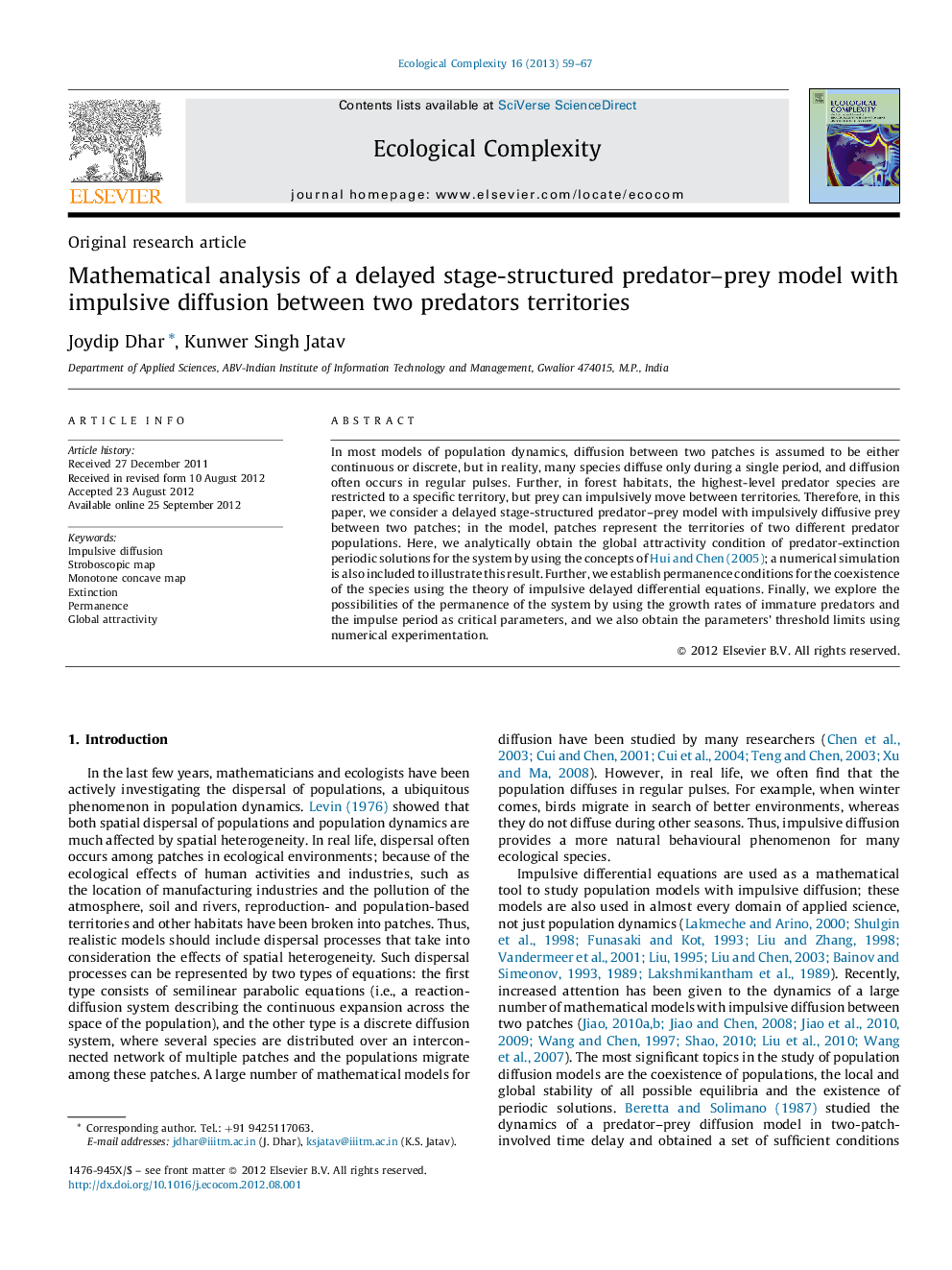| Article ID | Journal | Published Year | Pages | File Type |
|---|---|---|---|---|
| 4372510 | Ecological Complexity | 2013 | 9 Pages |
In most models of population dynamics, diffusion between two patches is assumed to be either continuous or discrete, but in reality, many species diffuse only during a single period, and diffusion often occurs in regular pulses. Further, in forest habitats, the highest-level predator species are restricted to a specific territory, but prey can impulsively move between territories. Therefore, in this paper, we consider a delayed stage-structured predator–prey model with impulsively diffusive prey between two patches; in the model, patches represent the territories of two different predator populations. Here, we analytically obtain the global attractivity condition of predator-extinction periodic solutions for the system by using the concepts of Hui and Chen (2005); a numerical simulation is also included to illustrate this result. Further, we establish permanence conditions for the coexistence of the species using the theory of impulsive delayed differential equations. Finally, we explore the possibilities of the permanence of the system by using the growth rates of immature predators and the impulse period as critical parameters, and we also obtain the parameters’ threshold limits using numerical experimentation.
► We proposed a stage-structured predator–prey model with impulsive diffusive prey. ► Patches are created by predator territories and prey can move between the patches. ► Obtained conditions for global attractivity of predator extinction and permanence. ► Thresholds of growth rates of immature predator for permanence are obtained. ► A threshold of impulse period for permanence is obtained.
